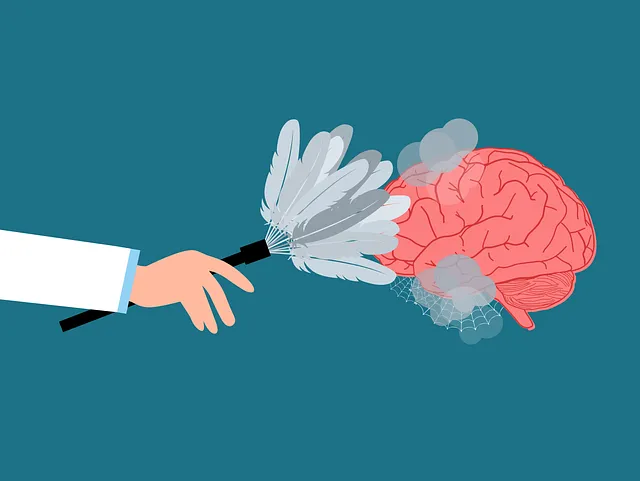Mental wellness programs like those offered by Kaiser in Broomfield are essential for holistic well-being, addressing stress management and trauma support with tailored interventions. Evaluating their effectiveness is crucial for quality care and improved participant outcomes. The Broomfield model integrates mental health into primary care, reducing stigma and encouraging patients to prioritize mental wellness. This approach can inspire Kaiser to create a holistic environment with diverse, tailored services and public awareness campaigns promoting mental health. Effective evaluation requires both quantitative (survey data) and qualitative (interviews, focus groups) methods, focusing on KPIs like access, wait times, and individual well-being. Continuous improvement through feedback loops and stakeholder communication ensures programs meet evolving needs, as demonstrated by Kaiser's support in Broomfield, including how to access mental health services through Kaiser there.
In today’s digital era, access to mental wellness programs is more crucial than ever. This article explores effective evaluation methods for these initiatives, focusing on strategies like quantitative and qualitative assessments, key performance indicators (KPIs), and iterative improvements inspired by the successful Broomfield model within Kaiser. Understanding these approaches empowers professionals to measure impact, enhance services, and foster better mental health outcomes.
- Understanding Mental Wellness Programs and Their Impact
- Broomfield: A Model for Accessing Mental Health Services
- Evaluation Methods: Quantitative and Qualitative Approaches
- Measuring Success: Key Performance Indicators (KPIs) in Mental Health
- Continuous Improvement: Iterative Evaluation for Effective Programs
Understanding Mental Wellness Programs and Their Impact

Mental wellness programs play a pivotal role in fostering holistic well-being and resilience among individuals. These initiatives are designed to address various aspects of mental health, from stress management and trauma support services to building emotional resilience. Understanding the impact of such programs is crucial, especially when evaluating their effectiveness. By examining how participants’ lives improve after engaging with these services, we can gain valuable insights into their overall benefits.
For instance, in Broomfield, Kaiser offers comprehensive mental health services that have proven effective for many. Their approach involves tailored interventions aimed at enhancing coping strategies and promoting positive mental health. Through these programs, individuals learn valuable tools to navigate stress, build resilience, and even recover from traumatic experiences. Evaluating such initiatives is essential to ensure their quality and make necessary adjustments, ultimately leading to better outcomes for those seeking mental wellness support through Kaiser or similar providers.
Broomfield: A Model for Accessing Mental Health Services

The Broomfield model offers a compelling framework for enhancing access to mental health services, particularly within established healthcare systems like Kaiser. This approach focuses on breaking down barriers that often prevent individuals from seeking help for their mental illnesses. By integrating mental health support into primary care settings, as exemplified by the Broomfield strategy, Kaiser can foster an environment where mental wellness is prioritized alongside physical health. This integration reduces the stigma associated with mental illness, making it easier for patients to openly discuss their concerns and access appropriate treatments.
This model encourages a holistic approach to mental health policy analysis and advocacy, ensuring that services are tailored to diverse communities. Public awareness campaigns development, inspired by Broomfield’s principles, can educate people about available resources, thereby empowering them to take charge of their mental wellness. Such initiatives contribute to a broader conversation on mental illness stigma reduction efforts, ultimately aiming to create a more inclusive and supportive society.
Evaluation Methods: Quantitative and Qualitative Approaches

When evaluating mental wellness programs, both quantitative and qualitative approaches offer valuable insights into their effectiveness. Quantitative methods involve numerical data analysis, such as surveys with measurable scales to assess symptoms, outcomes, and participant satisfaction. This data-driven approach allows for statistical comparison and identification of trends across large populations, providing a clear picture of the program’s impact on mental health metrics. For instance, tracking changes in anxiety or depression scores through standardized questionnaires can demonstrate the success of interventions aimed at improving psychological well-being, as highlighted by research on Broomfield how to get mental health services through Kaiser.
Complementing quantitative assessments, qualitative methods delve deeper into participants’ subjective experiences and perceptions. Interviews, focus groups, and narrative essays enable exploration of individual stories, fostering a nuanced understanding of the program’s influence. This approach captures rich details about participants’ journeys, including challenges faced, strengths developed, and shifts in perspective—aspects that quantitative methods may overlook. By integrating both approaches, evaluators can gain a comprehensive view, ensuring that mental wellness programs not only meet statistical criteria but also foster positive thinking, compassion cultivation practices, and effective communication strategies.
Measuring Success: Key Performance Indicators (KPIs) in Mental Health

Measuring Success: Key Performance Indicators (KPIs) in Mental Health
Evaluating the effectiveness of mental wellness programs is a critical aspect of ensuring positive outcomes for individuals seeking support through services like those offered by Kaiser in Broomfield. To accurately gauge success, it’s essential to establish clear Key Performance Indicators (KPIs). These metrics should align with the program’s goals and objectives, focusing on both the individual and systemic levels. For instance, if a mental wellness program aims to improve access to care, KPIs might include tracking the number of individuals who complete an initial assessment or the reduction in wait times for therapy sessions within Kaiser Broomfield.
Additionally, incorporating self-care practices, burnout prevention strategies for healthcare providers, and stress reduction methods into the evaluation framework can provide a holistic view of program success. By monitoring these KPIs, mental health professionals at Kaiser in Broomfield can adapt their approaches, ensuring that services remain effective and responsive to the evolving needs of their clients. This data-driven approach not only improves individual outcomes but also contributes to the overall quality of mental health care delivered through Kaiser’s services.
Continuous Improvement: Iterative Evaluation for Effective Programs

In the realm of mental wellness program evaluation, continuous improvement is paramount to ensuring effective services, much like Broomfield residents seeking Kaiser’s support for their mental health needs. Iterative evaluation methods play a crucial role in this process, allowing programs to adapt and enhance based on regular feedback loops. By consistently assessing the impact and satisfaction levels of participants, organizations can identify areas for refinement and tailor interventions to meet evolving needs. This dynamic approach is akin to refining a symphony over time, where each performance (evaluation) provides insights into how to better resonate with the audience (service users).
A key strategy within this framework is active communication with all stakeholders involved in the program. Encouraging open dialogue through surveys, focus groups, and one-on-one discussions ensures that diverse perspectives are captured. Additionally, integrating mental wellness journaling exercises can offer valuable insights into participants’ emotional healing processes, providing quantitative and qualitative data for evaluation. These combined methods enable a holistic understanding of the program’s effectiveness, fostering an environment where continuous improvement is not just a goal but a living, breathing aspect of service delivery at Kaiser and beyond.
Mental wellness program evaluations are essential for understanding their impact and guiding continuous improvement. By combining quantitative data on key performance indicators (KPIs) with qualitative insights from participants, organizations like Broomfield offer a model for effectively accessing mental health services through Kaiser and other providers. Iterative evaluation ensures programs remain dynamic and responsive to the evolving needs of those they serve. This comprehensive approach not only enhances the quality of care but also fosters a culture of mental wellness in communities worldwide.






